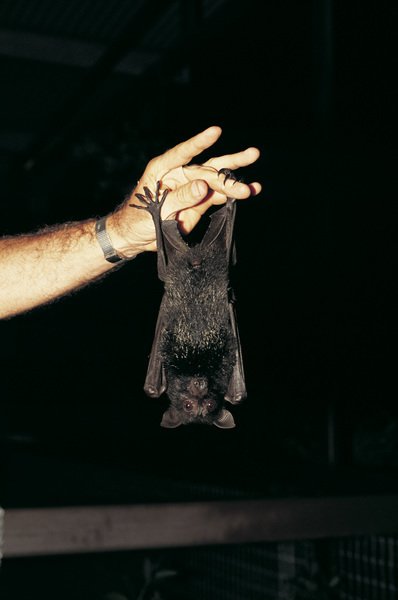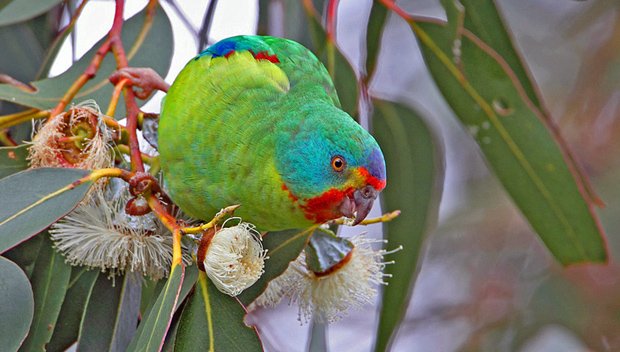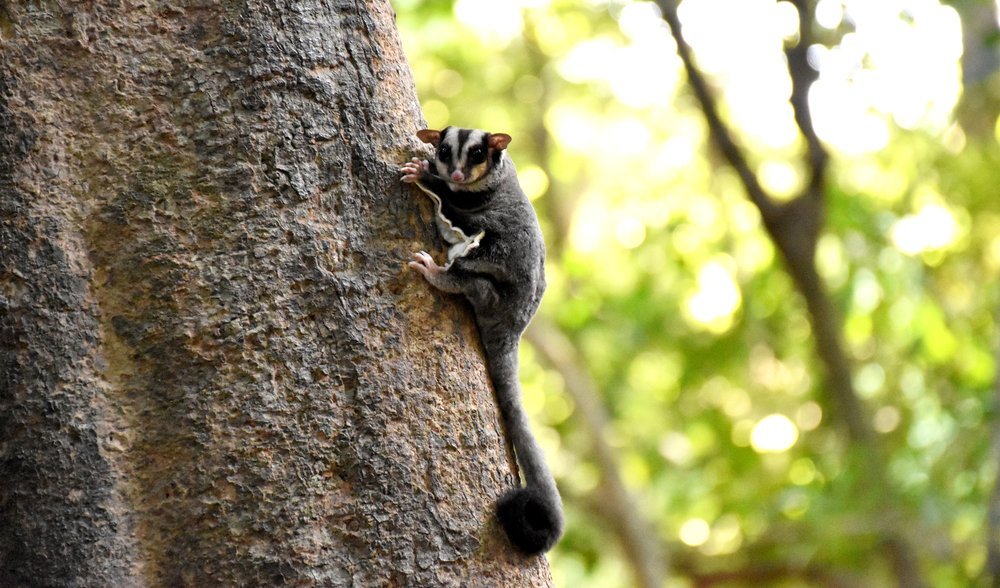What happens when native species extend their ranges

Imagine 6.3 billion snails releasing 23 tonnes of faeces a day. That’s the situation today in the Swan River in Perth, where mud snails now reign supreme.
Their numbers have exploded since they were first detected there in 1954 and, in the river’s lower reaches, they now crowd the bed in densities of up to 400 per square metre. This species is native but its natural range lies more than 3000km away in eastern Australia.
Seagrass beds in the Swan are now under siege thanks to the snail’s success. Before it arrived, the river had few hard surfaces on which small seaweeds could grow. Now, seagrass is being uprooted by snails and smothered by seaweed that dislodges from snail shells at the rate of 433 million fragments a day. Snail faeces are thought to be aggravating the problem by fertilising the seaweed.
We often hear of harmful animals from overseas – foxes, cats, toads and the like – but problems also ensue when our own native species spread from one region to another. In two centuries, hundreds of species in Australia have moved in every possible direction, amounting to a major reshuffling of the ecological pack. Anything and everything is involved, including spiders, cicadas, earthworms, marsupials, fish, birds, frogs and even diseases, although only some are regarded with concern.
See more: Aussie invasion: the impacts of our natives overseas
Species are often moved unintentionally. Mud snails are thought to have travelled on live oysters taken from eastern Australia to Perth and stored in the Swan before use. Northern Queensland frogs regularly travel south inside bunches of bananas; spiders relocate in building supplies; lizards move with firewood; and outback seeds reach the coast aboard cattle trains. The Victorian Frog Group estimates that more than 6000 ‘banana frogs’ reach Victoria each year, although the only lasting outcome observed so far is a colony of dwarf tree frogs that has taken up residence in a flooded quarry near Melbourne.
Other animals have extended their ranges by themselves because changes to the landscapes have suited them. Waterbirds arrive wherever dams go in, bats find abandoned mines and orchard swallowtail butterflies locate citrus trees planted around outback homesteads. Many of the birds found in our capital cities weren’t anywhere near them in the past. Writing of the crested pigeon in 1865, naturalist John Gould regretted that “being exclusively an inhabitant of the plains of the interior, it can never become an object of general observation”. Today, crested pigeons strut about in Hyde Park in Sydney, where lawns with trees stand in for outback woodlands. Galahs, little corellas and red-rumped parrots have moved with them. Because of its dams, Perth now has a range of birds from the other side of Australia, including spoonbills, moorhens, darters and great crested grebes.
See more: Australia’s marsupial gliders
Some animals have been moved deliberately. Kookaburras were taken long ago to Tasmania and Perth, well beyond their natural range, for the purpose of killing snakes. Platypuses were introduced to Flinders Chase National Park on Kangaroo Island in the 1920s following concern the mammal was declining on the mainland. Brush turkeys too were introduced to the island.
Vast numbers of plants have escaped from cultivation after being grown somewhere new. When I waded into the Swan to see the mud snails I passed feral swamp she-oaks from eastern Australia. Among other easterners growing wild around Perth are tree ferns, tea-trees, eucalypts, kurrajongs and acacias, including Australia’s floral emblem, the golden wattle.
Fish stocking has given many rivers new fish – the upper Barron River in Queensland has 12 extra species. Crayfish were put into rivers for future meals, or stocked in farm dams that overflow in floods, sending them into streams.
No-one keeps a database of all this movement and serious sleuthing is needed to get to the bottom of some changes. Redback spiders live in sheds and under outdoor furniture but seldom in forests. Spider authority Robert Raven has wondered why this species went undiscovered until 1870, by which time 200 other Australian spiders had been named. Redbacks were hardly mentioned by early travellers and naturalists, and rarely feature in Aboriginal legends and languages.

(Image Credit: Calistemon/Wikimedia)
Back in 1988 I wrote in this magazine (AG 10) of Robert’s suspicion that redbacks had been introduced to Australia from abroad. A mention was later found in an 1850 book of black-and-red spiders around Adelaide, and the thinking today is that redbacks are native to the country’s south-western third, and were introduced eastwards. Flying-fox movements also warrant careful interpretation. When University of Oxford scientist Francis Ratcliffe came to study flying foxes in the 1920s, he documented a situation that defies belief today. Grey-headed flying foxes were sometimes wandering down to Victoria during the warmer months but in winter there were no bat camps south of the Mary River in southern Queensland.
That situation prevailed until 1928, when a winter camp formed in northern New South Wales at Nambucca Heads. Today, there are permanent grey-headed flying fox camps right down to Melbourne and in Adelaide, where they first arrived in 2010.
See more: Possums aren’t the gentle vegetarians you thought they were
Their presence in these cities is made possible by planted vegetation that provides them with year-round food, especially fruit trees and winter-flowering gums. The slower to spread black flying fox has progressed south from Rockhampton in central Queensland to Sydney. In our suburbs, flying foxes can appear to be thriving, but national counts show numbers well below those in Ratcliffe’s day, when a ‘large’ camp had more than 50,000 bats. In a national survey in late 2016, no camp of ‘greys’ reached that size. Trees in cities can’t make up for the vast tracts of rainforest, eucalypt forest and paperbark swamp cleared since 1788.
Species on the move challenge us. We think of lyrebirds as native to Australia, but Australia is a continent and one of the world’s largest countries. Were it divided, like Europe, into smaller countries, those snails and kookaburras in Perth would count as foreign – as would lyrebirds, taken to Tasmania during the 1930s to conserve them. ‘Foreign’ may not be the correct word, but the mud snails in Perth qualify as an introduced species and feral pest.

A black flying fox. (Image Credit: Richard Thwaites)
The rainbow lorikeets around Perth, descended from cage birds that managed to win their freedom, have been declared a state pest for the damage they do to stone fruits and other crops. Australian plants often appear on regional weed lists, sometimes as species banned from cultivation. Advocates for native gardens usually specify ‘local natives’ to clarify that native and Australian aren’t the same.
Birds and bats that travel under their own wings aren’t thought of as introduced, although those that cross the sea, including the nankeen kestrels that reached Christmas Island, are sometimes called ‘self-introduced’.
Some of these movements take place without any cause for concern. No-one speaks badly about crested pigeons and butterflies thriving in new locations. Everyone likes the white terns that colonised Lord Howe Island after finding that its planted Norfolk pines offer good nesting sites.
See more: Australia’s endangered species list
But many arrivals do acquire a bad name. Eradication campaigns are mounted in Perth whenever Queensland fruit flies turn up, as they did in 1989 and most recently in 2016, probably via smuggled fruit; they are also a problem in Victoria, SA and NSW. Redbacks in eastern Australia aren’t welcome, nor are those mud snails in the Swan.
To make matters worse, the snails brought a parasite with them – a trematode worm that infects people who swim in the river, burrowing into their skin and causing dermatitis.
Unloved as well are the giant northern termites that appeared recently on the Gold Coast in southeastern Queensland, and fungal diseases from the eastern states that blight WA blue gum plantations.
Ecological fallout from some travellers can be huge. Sugar gliders taken to Tasmania as pets during the 1850s now prey on endangered swift and orange-bellied parrots at their nests. In some remnant forests, no swift parrots are raising young and about half the females that attempt to nest are eaten each year.

A swift parrot (Image Credit: Susan Flashman)
Introduced lyrebirds are a high risk to the Tasmanian Wilderness World Heritage Area, worse than cats and starlings, because they disturb soil and litter when they scratch around on the ground to feed – up to 200 tonnes per hectare each year. A fence was built around the only known colony of the endangered myrtle elbow orchid to stop lyrebirds scraping it into extinction.
Tasmanian platypuses sometimes die from a fungal infection, mucormycosis, which evidently reached the island on frogs coming from Queensland or NSW.
On the mainland, yabbies from inland wetlands are now the main concern for the critically endangered Fitzroy Falls spiny crayfish, having colonised the one stream in NSW the crayfish inhabits. In some pools, yabbies outnumber it 25 to one and crayfish show signs of yabby attacks. South of Perth, the smooth marron, a widespread crayfish in south-western WA, is taking over from the critically endangered hairy marron after it was released into Margaret River.
On the Atherton Tableland in northern Queensland, the Lake Eacham rainbowfish vanished after four species of Australian fish, including the predatory mouth almighty, were introduced into the lake during the 1980s by persons unknown. Fortunately, the rainbowfish was found in a few nearby streams.
See more: An Illustrated guide to Australian wattle
Other problems, of which there are many, include introduced koalas over-browsing and killing trees on Kangaroo Island; and sweet pittosporum, a rainforest tree from eastern Australia, shading out rare orchids around Adelaide.
Many more moves can be expected as climate change becomes an important driver. Although the southerly spread of flying foxes is often linked to rising temperatures, scientists have shown that black flying foxes advanced far more rapidly than climate change alone can justify, by 123km a decade. Urban trees, including Moreton Bay figs in parks, support the bats pouring south, as well as figbirds and koels.
Climate change does fit some changes already detected in the sea. In recent decades, reef fishes such as the one-spot puller, snakeskin wrasse and southern Maori wrasse have spread from Bass Strait to Tasmania’s east coast, where the sea is warming noticeably. Another newcomer is the long-spined sea urchin, which, by browsing seaweeds on Tasmania’s underwater rock shelves, is converting dense kelp beds into ‘urchin barrens’ of bare rock. Biologists estimate 150 kelp-loving species are losing out, including the black-lip abalone, an important commercial species. Urchin culling has been trialled, and new limits have been imposed on the harvesting of rock lobsters, which are urchin predators.
Climate change has emerged as a new reason to move species to save them, but caution is called for. Tasmania’s urchins, sugar gliders and lyrebirds show us that southward shifts can be bad for other species. Biologists agree that nothing should be moved south until the risks are assessed.

A sugar glider. (Image Credit: Shuttershock/CKIZE)
But some of the species that have moved give cause for optimism. Cootamundra wattle, native to a small area around the town of Cootamundra in southern NSW, escapes so freely from gardens that it’s now a weed in every Australian state – and overseas as well. It’s a tree that shouldn’t be grown near bushland. Although plants with small distributions are said to face disaster from climate change, Cootamundra wattle has spread into much hotter and drier places than it came from, showing that a small distribution need not necessarily denote a high risk from climate change.
Coastal tea-trees now grow hundreds of kilometres further north than before, and long-billed corellas from Victoria now live in Cairns, more than 2000km away, adding to the evidence of life’s adaptability. This is good news, given the risks entailed in moving anything, although it may not apply to most species. Climate change provides a compelling reason to study examples such as these.
The animals and plants on the move are so many and so varied they give us much to wonder about. Because threatened species require so much attention, we don’t hear enough about the reverse situation – species that have gained some advantage from our influence. Some of them, including redbacks, galahs, crested pigeons and various wattles, are probably doing better today than ever before.
We should never neglect the losers, including those doing worse because of the ‘winners’, but there’s some comfort to be had from knowing that some species in Australia are thriving from the changes people have made.
READ MORE:
- Feral animals are running amok on Australia’s islands
- The truth about white-tail spiders
- Australia’s 10 most dangerous spiders




